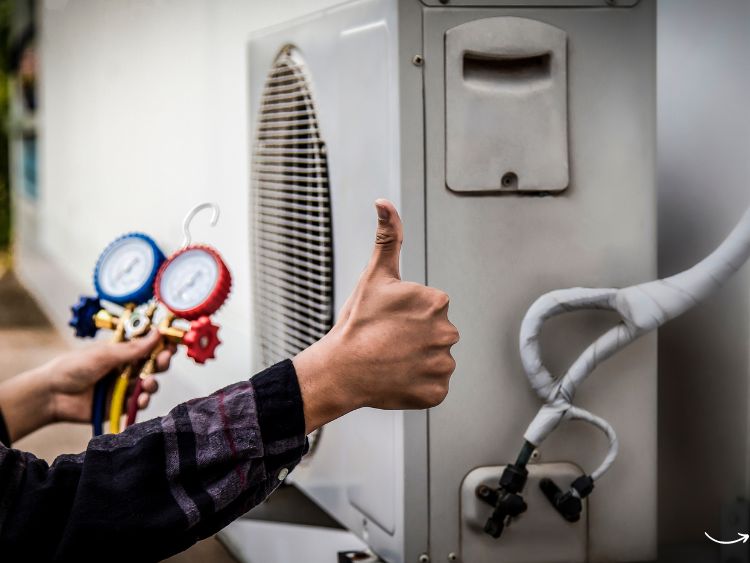Ever found yourself scratching your head over HVAC gauges? You’re not alone! These nifty tools are the unsung heroes of the heating, ventilation, and air conditioning (HVAC) world. Whether you’re an HVAC newbie or a seasoned pro, understanding HVAC gauges is crucial for maintaining a well-functioning system. In this comprehensive guide, we’ll dive deep into what HVAC gauges are, why they’re important, and how to use them effectively. Buckle up; it’s time to demystify these vital instruments!
What Are HVAC Gauges?
HVAC gauges, often referred to as manifold gauges, are devices used to measure the pressure of gases or liquids within an HVAC system. These gauges help technicians monitor and diagnose the performance of air conditioning and refrigeration systems, ensuring everything runs smoothly.
Types of HVAC Gauges
There are several types of HVAC gauges, each serving a unique purpose:
- Manifold Gauges: These are the most common type and come in two main varieties – analog and digital.
- Compound Gauges: These measure both positive and negative pressures.
- High-Pressure Gauges: Used for measuring higher pressures, typically in refrigerant lines.
- Vacuum Gauges: These measure the vacuum level in a system during evacuation.
Why Are HVAC Gauges Important?
HVAC gauges are indispensable for several reasons:
- Diagnostic Tool: They help diagnose issues in the HVAC system by providing accurate pressure readings.
- Efficiency Check: Gauges ensure that the system operates efficiently, preventing energy waste and reducing costs.
- Safety: By monitoring pressures, gauges help maintain safe operating conditions, preventing potential hazards.
How to Use HVAC Gauges
Using HVAC gauges might seem daunting at first, but with a little practice, you’ll get the hang of it. Here’s a step-by-step guide:
Step 1: Gather Your Tools
Before you start, make sure you have the following tools:
- HVAC manifold gauge set
- Hoses (typically red, blue, and yellow)
- Personal protective equipment (gloves, safety glasses)
Step 2: Connect the Gauges
- Attach the blue hose to the low-pressure side of the HVAC system.
- Connect the red hose to the high-pressure side.
- Attach the yellow hose to the vacuum pump or refrigerant tank, depending on the task.
Step 3: Read the Gauges
- Low-Pressure Gauge (Blue): This measures the suction pressure of the refrigerant.
- High-Pressure Gauge (Red): This measures the discharge pressure.
Step 4: Interpret the Readings
Compare the gauge readings with the manufacturer’s specifications to determine if the system is operating correctly. High or low readings can indicate various issues, such as leaks, blockages, or overcharging.
Common Issues Diagnosed with HVAC Gauges
HVAC gauges can help identify several common issues:
- Refrigerant Leaks: Low pressure on the gauges often indicates a refrigerant leak.
- System Blockages: Abnormally high pressure can signal a blockage in the system.
- Overcharged Systems: If both gauges show higher than normal readings, the system might be overcharged with refrigerant.
Tips for Maintaining Your HVAC Gauges
Like any tool, HVAC gauges require proper care to ensure they last and function correctly. Here are some maintenance tips:
- Regular Calibration: Periodically calibrate your gauges to maintain accuracy.
- Clean Hoses: Ensure the hoses are clean and free of debris before each use.
- Store Properly: Keep your gauges in a protective case to prevent damage.
Choosing the Right HVAC Gauge Set
Selecting the right gauge set is crucial for accurate diagnostics and efficient repairs. Here are some factors to consider:
Analog vs. Digital
- Analog Gauges: These are traditional and widely used due to their simplicity and reliability.
- Digital Gauges: Offer more precise readings and often come with additional features like temperature sensors and data logging.
Brand and Quality
Invest in a reputable brand to ensure durability and accuracy. Some popular brands include:
- Yellow Jacket
- Robinair
- Fieldpiece
Price
While it might be tempting to go for the cheapest option, investing in a high-quality set will save you money in the long run due to its longevity and reliability.
FAQs about HVAC Gauges
What is the purpose of the blue and red hoses on an HVAC manifold gauge set?
The blue hose connects to the low-pressure side (suction), while the red hose connects to the high-pressure side (discharge) of the HVAC system.
How often should HVAC gauges be calibrated?
It’s recommended to calibrate your gauges annually or whenever you suspect they might be providing inaccurate readings.
Can I use HVAC gauges for both air conditioning and refrigeration systems?
Yes, HVAC gauges are versatile and can be used for both air conditioning and refrigeration systems, provided they are compatible with the specific refrigerant used.
What do high pressure readings indicate?
High pressure readings can indicate several issues, including overcharging, blockages, or a malfunctioning compressor.
Conclusion
Understanding HVAC gauges is essential for anyone involved in the maintenance or repair of HVAC systems. These gauges are invaluable tools for diagnosing issues, ensuring efficiency, and maintaining safety. By following the guidelines and tips provided in this guide, you’ll be well-equipped to handle HVAC gauges like a pro. Remember, the key to mastering HVAC gauges is practice, proper maintenance, and continual learning. Happy gauging!



